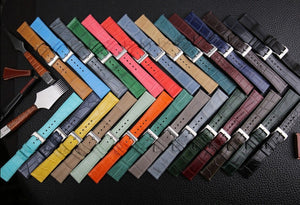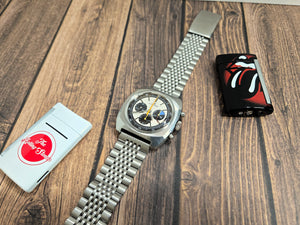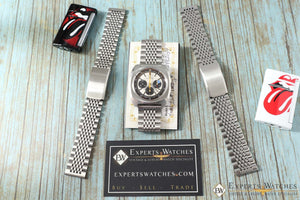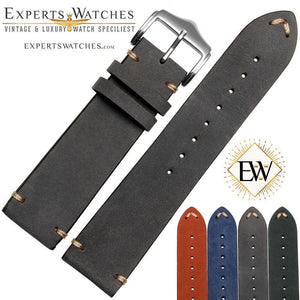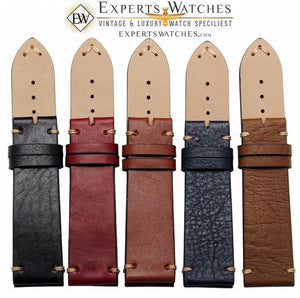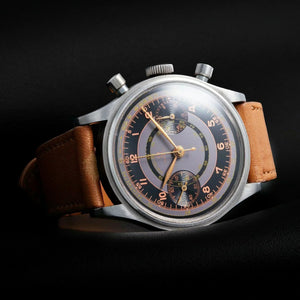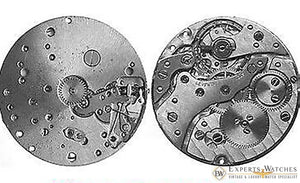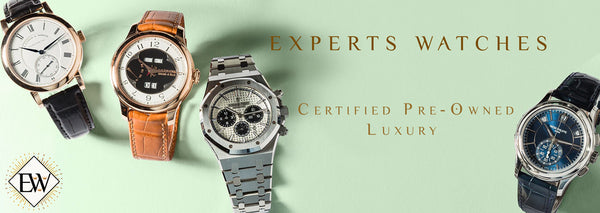Vintage Heuer Serial Number Guide
Vintage Heuer serial number, references, movements, rarity and grails!
A conservative, research-backed reference to date and understand vintage Heuer and early TAG Heuer watches. This guide consolidates reference numbers, movements, introduction years, conservative serial bands, the 1962–68 Autavia case serial batches, model rarity notes, and a non-price grail overview. Verified Experts Watches examples anchor early serial ranges. Autavia 1962–68 batch data and rarity estimates are attributed where used; reference/year/movement mappings draw from the OnTheDash Master Reference; grail curation summarizes defining models only (no prices).
Conservative serial number timeline (1935–mid 1990s)
Heuer did not publish a universal serial/year chart. Bands below are intentionally conservative and anchored by documented examples, movement-era transitions, and model launch chronology. Late1930s are split finely to reflect real anchors (e.g., Reference 2443 at 54,0xx in 1942; 2558 at 70,xxx in 1940's; Reference 345 at 56,7xx in 1937 to 1943; 2447 pre‑Carrera at 71,2xx in 1943). Please note: Everything is an estimate with ± 5 to 10 years.
Autavia 1962–1968 screw‑back case serial batches
The screw‑back Autavia series (2446/3646) shows tightly grouped serial batches by execution, with coherent evolution of hands, pushers, crowns, and movements. Earliest documented 3646 ~4865x; last noted 2446 GMT around 100129. Highlights below summarize the batch structure and “things to note” from the research corpus.
- 3646 all‑lume hands: ~4865x–488xx
- 2446 all‑lume hands: ~4885x–493xx
- 3646 steel hands (incl. red chrono): ~488xx–491xx
- 2446 steel hands: ~492xx–495xx
- 3646 steel hands: ~522xx–526xx
- 2446 steel hands: ~527xx–532xx
- 2446 Seafarer A&F: 5289x–5291x (tiny cluster)
- 3646: ~523xx–527xx; 591xx–594xx
- 2446: ~528xx–534xx; 594xx–599xx
- 3646: ~825xx–829xx (no‑lume wide bezel)
- 2446: ~829xx–834xx (thick lug case)
- 3646 Andretti: 841xx–847xx; 880xx–890xx; 961xx–971xx
- 2446 Rindt: 851xx–860xx; 868xx–873xx; 890xx–90xxx; 950xx–961xx
- 2446 all‑lume: within 3rd/4th end ranges
- 2446 GMT: ~999xx–101xxx (final screw‑back runs)
Notes: 1966 “Swiss T” re-lume dial placements in 84/85xxx ranges; strict batch logic; tiny A&F Seafarer cluster; IMS logo batches around 84xxx and 88/89xxx; Tachy dials tied to Andretti/Rindt cases with shorter hands.
Key references with introduction year and movement
Highlights from the OnTheDash Master Reference (intro year and movement). Use alongside the Autavia batch mapping above and the conservative serial timeline for dating. Families include Autavia, Carrera, Monaco, Camaro, Silverstone, Montreal, Mareographe/Seafarer, Skipper, Calculator, Pasadena, Chronosplit and more.
- 2446 (1962) — Valjoux 72
- 3646 (1962) — Valjoux 92
- 2446 GMT (1968) — Valjoux 724
- 2447 (1963) — Valjoux 72
- 3647 (1963) — Valjoux 92
- 3147 Dato 45 (1966) — Landeron 189
- 1153 (1969) — Calibre 11/12
- 1158 (1970s) — Calibre 12
- 1133 (1969) — Calibre 11/12
- 73633 (early 1970s) — Valjoux 7736 (manual)
- 740303N (1970s) — Black‑coated (“Dark Lord”)
- 7220 (1968) — Valjoux 72
- 73343/73443 (1968–69) — Valjoux 7733/7734
- 110.313 Silverstone (1974) — Calibre 12
- 110.633 Calculator (1972) — Calibre 12
- 15640 Skipper (mid‑1970s) — Calibre 15
- Mareographe/Seafarer (1950s) — Valjoux 72 (modified)
- Pasadena 750.501 (early 1980s) — Valjoux 7750
- 510.501 (early 1980s) — Lemania 5100
- 844 Diver (1982) — ETA automatic
Vintage Heuer rarity overview (selected highlights)
Production “fewer than” estimates are based on serial‑batch analysis; “numbers known” reflect documented examples in the researcher’s database. Selected highlights below; the methodology emphasizes maximum possible produced and documented sightings.
- 3646 1st exec Mk1 hands: <25 known; <150 produced
- 2446 1st exec Mk1 hands: <25 known; <150 produced
- 2446 Seafarer: <10 known; <50 produced
- 3646 Indy: <15 known; <50 produced
- 1163 MH Chronomatic: <10 known; <200 produced
- 1163T Siffert Chronomatic: <20 known; <200 produced
- 1163 GMT 1st exec: <30 known; <350 produced
- 2447 S Eggshell: <30 known; <350 produced
- 2447 Seafarer A&F: <30 known; <200 produced
- 7754 Skipper: <40 known; <250 produced
- 1133B Chronomatic: <20 known; <250 produced
- 740303N “Dark Lord”: <50 known; <400 produced
Approach: “Fewer than” represents the maximum possible produced inferred from serial analysis; “known” is the count of individually logged pieces (auctions/dealers/collectors). Percent of spare cases retained for service centers is accounted for in the estimates.
Top vintage Heuer grails (non‑price summary)
A curated selection of highly coveted production Heuers across Autavia, Carrera, and Monaco lines. Descriptions summarize defining traits only; pricing is intentionally omitted.
- Autavia 1163T “Siffert” Chronomatic (1969): Early Cal. 11 launch dial; Jo Siffert association; very low observed count.
- Carrera 2447 Seafarer / Mareographe: Yachting/tide complications in Carrera case; tiny observed population across batches.
- Monaco 740303N “Dark Lord”: Black‑coated Monaco with orange accents; limited production and fragile finishes.
- Monaco 1133B Chronomatic: Rarest early Monaco variant with Chronomatic branding; very few documented pieces.
- Autavia 3646 1st exec Mk1 hands: Two‑register, early all‑lume hand set; extremely scarce batch size.
- Autavia 2446 1st exec GMT: Screw‑back case, all‑lume markers, arrow GMT; considered among the best vintage GMTs.
- Skipper 7754 “Skipperera”: Regatta dial inspired by Intrepid; moisture‑sensitive dials; very small total observed.
- Autavia 3646S IMS logo: Indianapolis Motor Speedway crest; under 50 expected; under 15 observed.
- Autavia 2446 Seafarer (screw‑back): Two tiny serial batches; fewer than 50 estimated produced.
- Autavia 2446 1st exec Mk1 hands: Big‑sub tri‑compax launch Autavia; the archetypal early Heuer grail.
Verified Experts Watches anchors (serial, year, movement)
- Heuer 2443 — Serial 54K — Valjoux 72 — early 1940s — View
- Heuer 2558 (Datora / Dato‑Compax) — Serial 70K — Valjoux 72C — 1947 — View
- Heuer 345 “Big Eye” — Serial 56K — Valjoux 71 — early‑mid 1940s — View
- Heuer 2447 (pre‑Carrera / military) — Serial 71K — Valjoux 72 — late 1940s — View
Movement families and typical Heuer usage
Valjoux - Movement Guide
- 22 — 2‑register base; 1930s–40s (incl. monopusher variants).
- 23 — Slim 2‑register; 1940s–50s (e.g., ref 2444).
- 71 — Larger base; 1940s triple‑date/Big Eye (e.g., 3336, 345).
- 72 — 3‑register pillar; 1940s onward (2443, pre‑2447, 2446, 2447 Carrera).
- 72 (modified) — Tide modules (Mareographe/Seafarer).
- 72C — Calendar variant (2558, 2543).
- 92 — Economical 2‑register (Autavia 3646).
- 7730/7733/7734/7736 — 1960s–70s manuals (Camaro, Monaco 73633, Carreras).
- 7750 — Automatic chronograph (Pasadena 750.501).
Landeron & Venus
- Landeron 189 — Carrera 3147 “Dato 45” (1966).
- Landeron 48/149/248 — Select 1940s–50s chronographs.
- Venus 170/175 — Mid‑century calendar/chronograph usages.
Automatic (Project 99)
- Calibre 11 — 1969 launch; left crown (Monaco 1133, Autavia 1163, Carrera 1153).
- Calibre 12 — Higher beat; 1970s (Silverstone 110.313, Calculator 110.633).
- Calibre 15 — Small seconds/regatta (Skipper 15640).
Lemania & ETA
- Lemania 5100 — Central minutes (510.501) early 1980s.
- ETA 2824 / 7750 — TAG 1990s divers/chronos (2000/6000); 7750 also in 750.501 Pasadena.
- ETA quartz — Formula 1, S/el, later 2000 series.
Methodology and accuracy policy
- Conservative bands: Early 1940s split into 10–20k windows; 2558 at 70,000 (1947) anchors 70–90k; 2443 at 54,0xx and 345 at 56,7xx anchor 50–60k; 2447 pre‑Carrera at 71,2xx supports late‑1940s band.
- Batch logic: Autavia 1962–68 batch table used as “tight” ground truth for those cases and executions.
- Reference mapping: OnTheDash Master Reference used for intro year and movement families across model lines.
- Rarity context: Production “fewer than” and “known” counts synthesized to guide scarcity expectations.
- No overreach: Bands are guidance, not absolutes. We refine only when we add verified, photo‑documented serials.
Shop & related guides
- Shop our full Heuer collection
- Shop vintage Heuer watches
- All Experts Watches guides
- Universal Genève serial number guide
- Omega serial number guide
- Back to top
Sources
- Autavia 1962–68 screw‑back case serial batches and execution notes.
- Vintage Heuer production estimates and rarity methodology (known vs. fewer than).
- OnTheDash Master Reference: model family “table of contents” with intro years and movements.
- Curated “Top Ten Vintage Heuer Grails” features and rarity narratives (summarized without prices).
Watch Gallery
Connecting Collectors with Iconic Timepieces Since 2000
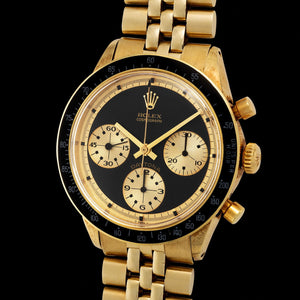
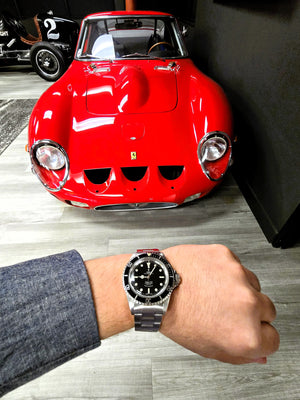
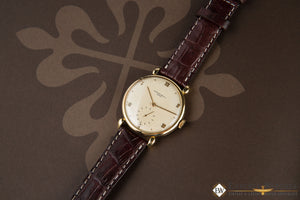
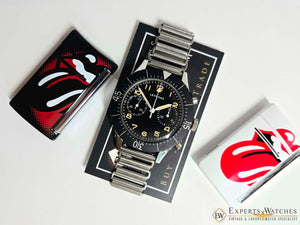
Our collections
Testimonials
Could Not Ask For Better Service! Shipping was unbelievably quick! Awesomeness at its finest!
Highly Recommend!! I'm over satisfied! ExpertsWatches is awesome! So legit!
Very professional! Holy Crap that was fast!👍🏽🤣👍🏽
Michael I.
JAEGER LeCOULTRE Master Compressor Titanium Diving PROGeographic GMT
Our Latest Thoughts
Vintage Omega Chronograph Prices UP
Read more
Top Watch Brands with Ownership and Revenue 2025
Read more
Frédéric Piguet Caliber 21
Read more







